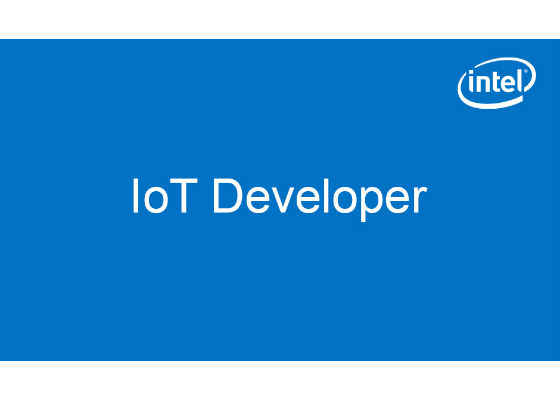Android Things Developer Preview 4 brings opportunities to run web apps on the Intel Joule module

Today Google* released the fourth developer preview (DP4) of Android Things*, an operating system for developing connected embedded devices. We are excited that DP4 brings new supported features that include OpenGL* and WebView* support for the Intel® Joule compute module.
 Survey
SurveyOpenGL allows developers to build and run applications that require high-end, animated graphics to create immersive and interactive visualization applications and to showcase real-time performance data in rich new ways.
We are especially excited for the WebView support because web developers can now use web environment tools to author and debug their Android Things graphical user interface. The WebView component is based on the Chromium* open source project and includes an updated version of the V8 JavaScript engine. This support provides the capability to do things like creating a graphical dashboard as the device control panel or even displaying ads on a digital signage.
WebView on Android Things makes it easy to use open-source development frameworks such as Cordova* on the Intel Joule module. Cordova on Android Things allows developers to use standard web technologies such as HTML5, CSS3, and JavaScript for cross-platform development. This creates new opportunities for mobile developers as they now have another platform where they can seamlessly deploy their applications.
Cordova* Architecture for Android Things*
The workflow to develop an application using Cordova is simple and straightforward. Cordova's standard plugins that will be available on the Intel Joule module include: battery status, console, device, dialogs, in app browser, splash screens, file, globalization, whitelist, network-information, file-transfer, geolocation, vibration, device-motion, devices-orientation, and media. In addition to building applications that utilize existing plugins, developers can create their own plugins to access device capabilities that might not be available on specific platforms. Developers can easily write new Cordova plugins to utilize the capabilities of the Intel Joule compute module’s connections to I2C, I2S, SPI, and GPIO sensors and devices. Refer to Cordova for the latest development updates.
Recently we announced UPM/MRAA support for Android Things on Intel® Architecture devices. Cordova plugins can link to the extensive UPM library of sensor and device drivers. Writing a Cordova plugin to support a device on I2C, I2S, SPI, or GPIO is simple, and we are providing a GitHub* project to host example Cordova plugin code for Android Things and UPM/MRAA.
Our mission at Intel is to help developers accelerate design and development of IOT projects to get their products to market faster.
Together we can fuel innovation and build new and rich experiences using Google Android Things on Intel® architecture. And if you're working on something interesting, give us a shout. We would love to hear from you!
For more such intel IoT resources and tools from Intel, please visit the Intel® Developer Zone
Source: https://software.intel.com/en-us/blogs/2017/05/10/android-things-developer-preview-4-cordova-intel-jouleX